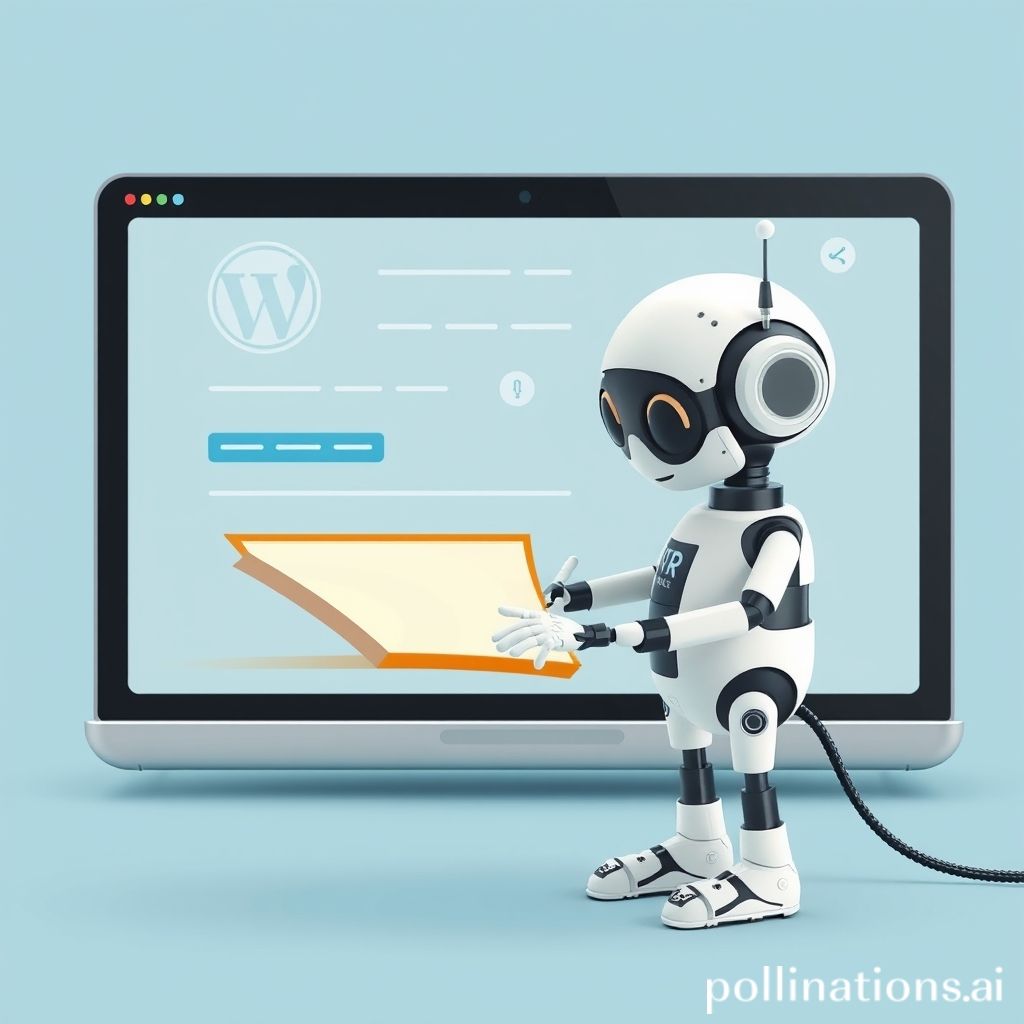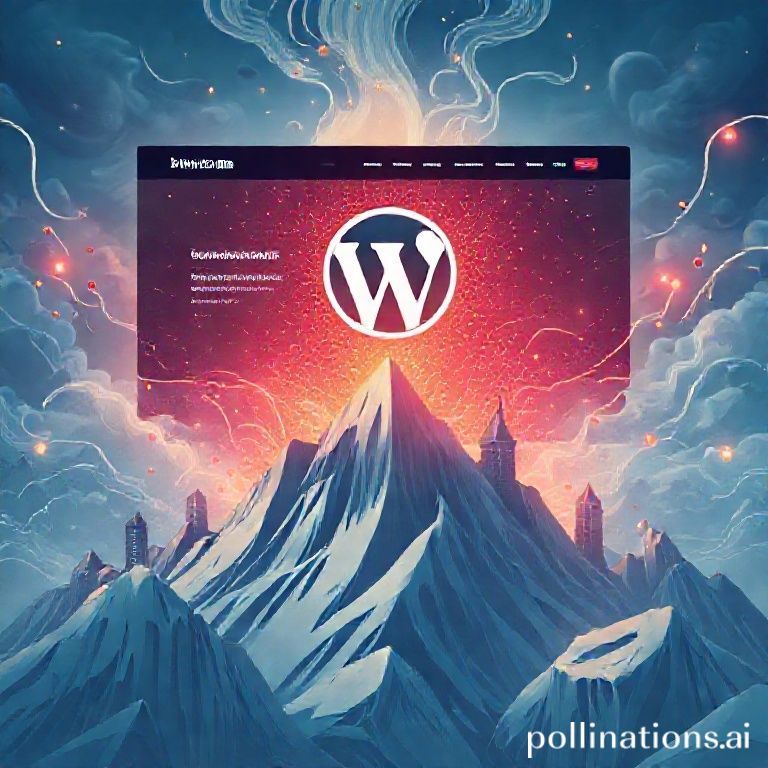Table of Contents
- Introduction
- Exploring the Rise of AI-Powered Content Creation Tools in the Writing World
- The Role of AI Content Generators: Enhancing or Replacing Traditional Writing?
- A Comparative Look: Human Creative Writing vs. Automated Content Machines
- How AI-Powered Tools are Disrupting Traditional Blogging and Content Photography
- Keeping Up with Digital Trends: Writing Automation and AI Writer Platforms
- Challenges and Limitations of AI Writers in Delivering Genuine Emotional Narratives
- Future Perspectives: Will AI Overhaul or Simply Augment Human Creative Processes?
- Ethical Considerations and the Perception of Quality in AI-Generated Content
- Conclusion
- Frequently Asked Questions
Introduction
In a world that’s increasingly driven by technology, one question that lingers in the minds of many is whether artificial intelligence can replicate the human touch, particularly in the realm of creativity. Can AI replace creative writers? This tantalizing question sits at the intersection of technology and artistry, inviting us to explore not just the capabilities of AI, but also the essence of human creativity itself.
This article delves into the intricate dance between man and machine as they journey through the landscape of creative writing. With AI’s prowess in analyzing vast amounts of data and generating content, it’s only natural to wonder if it can truly match the nuanced understanding and emotional depth that human writers bring to their craft. However, before jumping to conclusions, it’s essential to understand what it means for AI to operate in a creative capacity, and how it could potentially augment or even transform the process of storytelling.
Join us as we explore the myriad possibilities and potential pitfalls of AI-driven writing, and the profound implications this has on the future of literature and the arts.
Exploring the Rise of AI-Powered Content Creation Tools in the Writing World
Oh, the times they are a-changin’. Ain’t that the truth with artificial intelligence stepping into the limelight, effectively painting a new picture on the writing canvas? AI-powered content creation tools are popping up left and right, adding a new twist to how we produce words. It’s like watching a sorcerer conjure words out of thin air, transforming a blank page into a sea of coherency by magic.
Even though AI’s charm lies in its knack for analyzing data faster than a cheetah caught in a tailspin, it’s no Shakespeare-yet. The tools, with a splash of irony, promise creativity while following algorithms without a flair for the dramatic or a penchant for poetry’s nuanced nonsense.
Meanwhile, authors worldwide might be scratching their heads, pondering whether these clever contraptions will steal their thunder. Not so fast, folks! While AI steps up to the podium, it’s like watching a toddler figure out his first dance – endearing, but far from the gliding grace of seasoned writers. The gentle hum of a creative soul, for now, remains irreplaceably human, echoing through stanzas, like birds singing songs at dawn, a symphony of human emotion happily tangled with words.
The Role of AI Content Generators: Enhancing or Replacing Traditional Writing?
Once upon a time, in a world filled with ink and parchment, writers sat by candlelight, weaving tales that danced off the page and into the hearts of readers. Fast forward to today, and we find ourselves in a whirlwind of technology, with AI dipping its toes into the inkwell, trying its hand at the sacred art of storytelling. So, is this digital sorcerer here to steal the quill from writers’ hands or to lend a helping hand? Oh, the irony! On one hand, we’ve got AI content generators spitting out paragraphs faster than you can say ‘abracadabra.’ On the other, the soulful, human touch that only breathes life into words. AI can juggle facts and figures like a circus performer, but can it capture the wistful sighs of the wind or the whispers of first love in a crowded room? That’s where the plot thickens. AI, for better or worse, can certainly be the sidekick to a writer’s creative journey—offering fresh ideas, editing prowess, and even tackling mundane tasks. In the grand tale of creativity, AI might just be the trusty steed carrying writers to new realms of inspiration, rather than the dragon lurking to burn the art of writing to a crisp.
A Comparative Look: Human Creative Writing vs. Automated Content Machines
In a world where robots are tiptoeing into the realm of prose and poetry, the age-old craft of storytelling finds itself in an unexpected wrestling match with automated content machines. Imagine sitting by a fireside, listening to an old grandfather spin vivid yarns of adventures past while a shiny, new robot sits across, processing complex algorithms to churn out narratives. It’s an intriguing scenario, isn’t it? Human writers, with their hearts on their sleeves, sprinkle stories with age-old wisdom, dreams, and that ineffable touch of soul. The automated contenders, on the other hand, are wizards in their own right, capable of spitting out content at the speed of light. They analyze trends and mimic patterns with surgical precision. Oh, the irony when machines try to capture the whimsical nature of human expression! Like a trusty old quill versus a state-of-the-art typewriter, each has its place. As we turn the pages of this developing saga, one can’t help but wonder: are we, perhaps, standing on the precipice of a new era in writing, where man and machine might just find a way to dance together?
How AI-Powered Tools are Disrupting Traditional Blogging and Content Photography
In the ever-evolving world of blogging and content creation, AI-powered tools are shaking things up in ways that were once unimaginable. Imagine a bustling newsroom filled with typewriters—that’s how it used to be. Now, it’s more like a quiet library where machines whisper ideas into the ears of humans. With algorithms as sharp as a tack, AI can churn out ideas at the drop of a hat, leaving traditional writers scratching their heads in wonder. Oh, the irony! Using machine learning, these tools analyze audience behavior, helping to tailor content that’s as close to perfect as a bee to its hive.
Meanwhile, in the world of photography, AI is riding the wave, transforming simple snapshots into breathtaking imagery. Like a magician with a wand, AI can enhance photos, captivating viewers with vivid visuals that speak a thousand words. Just as the pen is mightier than the sword, some say AI is the new-age sword, cutting through conventional norms. However, while AI can mimic creativity, it lacks a heartbeat—a touch of humanity. Therein lies the rub, the foreshadowing of a potential partnership rather than a replacement. And so, with bated breath, we watch as this technological tale unfolds.
Keeping Up with Digital Trends: Writing Automation and AI Writer Platforms
Oh boy, the digital age sure has whipped up a whirlwind of change, hasn’t it? In this fast-paced world, where technology’s sprinting ahead like a cheetah on caffeine, writing automation and AI writer platforms are popping up everywhere like daisies in spring. Picture this: your favorite creative writer’s quill, replaced by blinking machines. It sounds like something out of a sci-fi flick, but it’s more real than you’d think.
Transitioning from old school typewriters to AI-powered platforms isn’t just a leap across a puddle; it’s like jumping across the Grand Canyon! These platforms can churn out text faster than grandma’s knitting needles, crafting content that’s crisp and informative. Yet, some folks are holding their breath, sipping tea with raised eyebrows. After all, can a lifeless algorithm truly capture the heart’s whispers or paint with words the way a human mind does?
Legend has it, that in some corners of the earth, the pen versus processor debate rages like a tempest. It’s a dance between tradition and technology, where AI writes a draft faster than you can say ‘abracadabra’, while human writers bring that unique sprinkle of stardust. Maybe, just maybe, there’s room for both to shine in this tale.
Challenges and Limitations of AI Writers in Delivering Genuine Emotional Narratives
When it comes to spinning a yarn that tugs at the ol’ heartstrings, AI writers often find themselves at a crossroads. Sure, they can churn out content like nobody’s business, but capturing the true essence of human emotion? Well, there’s the rub. Imagine a robot trying to pen the poignant tale of a summer love, where sun-kissed afternoons and whispered promises paint a tapestry of youthful yearning. AI, no matter how advanced, tends to hit a brick wall when asked to dive deep into the sea of human emotion.
Then, there’s the matter of subtle nuances like sarcasm and irony. It’s a bit like expecting a toaster to catch the drift of a private joke at a family’s Thanksgiving dinner—it’s just not equipped for that level of nuance. AI can mimic patterns and churn out syntactically correct prose, but emotional storytelling is akin to jazz: improv with a splash of spontaneity that machines just can’t muster.
Tales of heartbreak, triumph, and sheer bliss require a writer’s touch—someone who’s ventured down the winding roads of life and lived to tell the tale. Until AI learns how to wear its heart on its sleeve, it might just have to stick with the nuts and bolts of narrative.
Future Perspectives: Will AI Overhaul or Simply Augment Human Creative Processes?
Picture this: a world where AI and humans dance a delicate tango, each step a blend of mechanical precision and human flair. The future of creativity may not be a solitary artist lost in thought, but rather a duet between man and machine. With AI’s burgeoning abilities, folks are asking, will AI overshadow or simply polish our creative instincts?
Take a stroll down memory lane. Remember when email hit the scene? Folks said the postal service was a goner, yet here we are, still mailing holiday cards. Similarly, AI is not here to pen novels alone, but to be the pencil sharpener, refining our words, not replacing them outright. Irony, isn’t it? The machines that crunch numbers now dabble in poetry.
A peek into the crystal ball reveals a blend of augmented abilities. Like a trusty sidekick, AI can churn out facts, rhythm, and structure in the snap of a finger, while humans bring the real magic—emotion, nuance, and the bit of soul that algorithms can’t mimic. So, as we whistle into the future, consider AI as a brushstroke on a vast canvas of endless possibilities, an assistant, not the artist.
Ethical Considerations and the Perception of Quality in AI-Generated Content
When we talk about AI-generated content, boy oh boy, we’re opening a can of worms! Sure, it can whip up articles faster than a blink of an eye, but there’s a catch – is it truly up to snuff? These digital scribes, like wizards weaving words, sure have a way of crafting content that’s technically sound. Yet, there’s irony in the fact that while they cut through data like hot knives through butter, they might lack the heartbeat of human touch.
Then there’s the ethical side, a slippery slope if there ever was one. Should machines replace a flesh-and-blood writer, armed only with algorithms and hungry for efficiency? It’s like having a robot churn out Mona Lisa replicas – splendid, yet somehow soulless. Toss in cherry-picked symbolism, and it’s like AI churning out stories that are all bark and no bite. One might ponder, is it ethically sound? After all, the perception of quality often dances to the tune of authenticity, colored by our innate craving for connection.
Moreover, as we meander through the implications, we find ourselves staring at the horizon, wondering if a tale spun by circuits matches the rich tapestry of human experience. The final tale is yet untold, waiting just beyond the bend.
Conclusion
As we explore the ever-evolving landscape where AI and human creativity intersect, it’s clear that while AI brings unprecedented efficiency and data-driven insights, it cannot replace the emotional depth and cultural richness inherent in human writing. However, leveraging AI tools like WPHorde can enhance a writer’s capacity to generate ideas, streamline editing, and automate repetitive tasks. Writers who embrace these advanced tools stand to gain a significant competitive edge. So, don’t get left behind in this digital transformation. Visit WPHorde today to discover how AI can enhance your creative processes and propel your writing to new heights. Take action now, and let technology be your ally in unleashing unparalleled creativity and productivity.


















